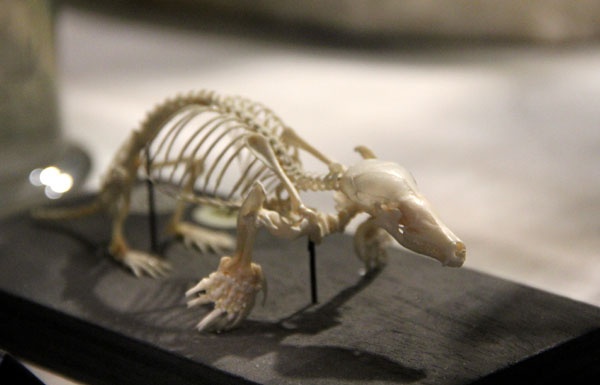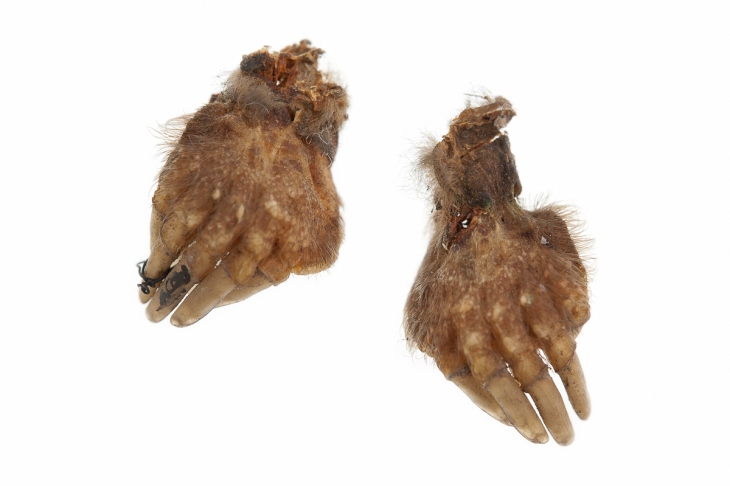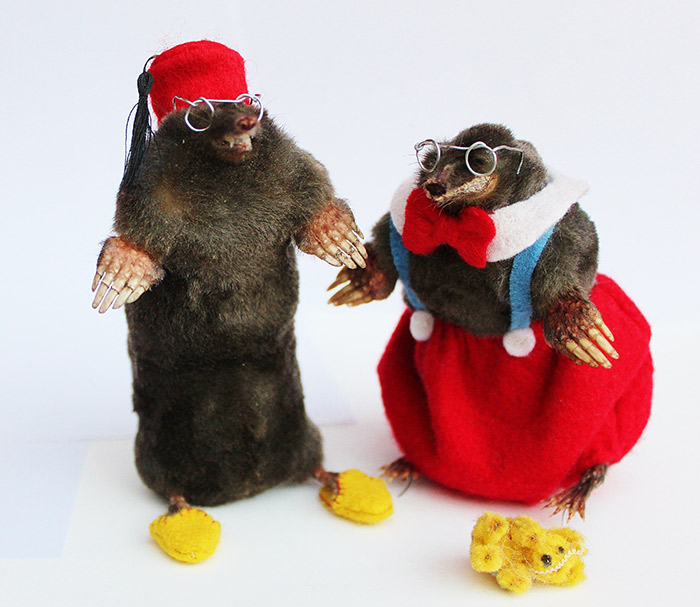This is a skeleton of a european mole at the Grant Museum. It is a much better photograph then the one I took, and the ones provided in the museum catalogue. It is from here.
The combination of the distinct evolutionary features of the moles, as this skeleton shows and the fact moles were (and still are) considered a pest and in an abundance, is likely to be the reason that they were used in teaching so much, their abundance in the museum and the moles subsequent residing within the glass jar.
Courtesy of Teaching and Research Collections and UCL Museums.
![]() Physical Object available to view at UCL Museums (search Grant Museum Catalogue: NON446)
Physical Object available to view at UCL Museums (search Grant Museum Catalogue: NON446)





